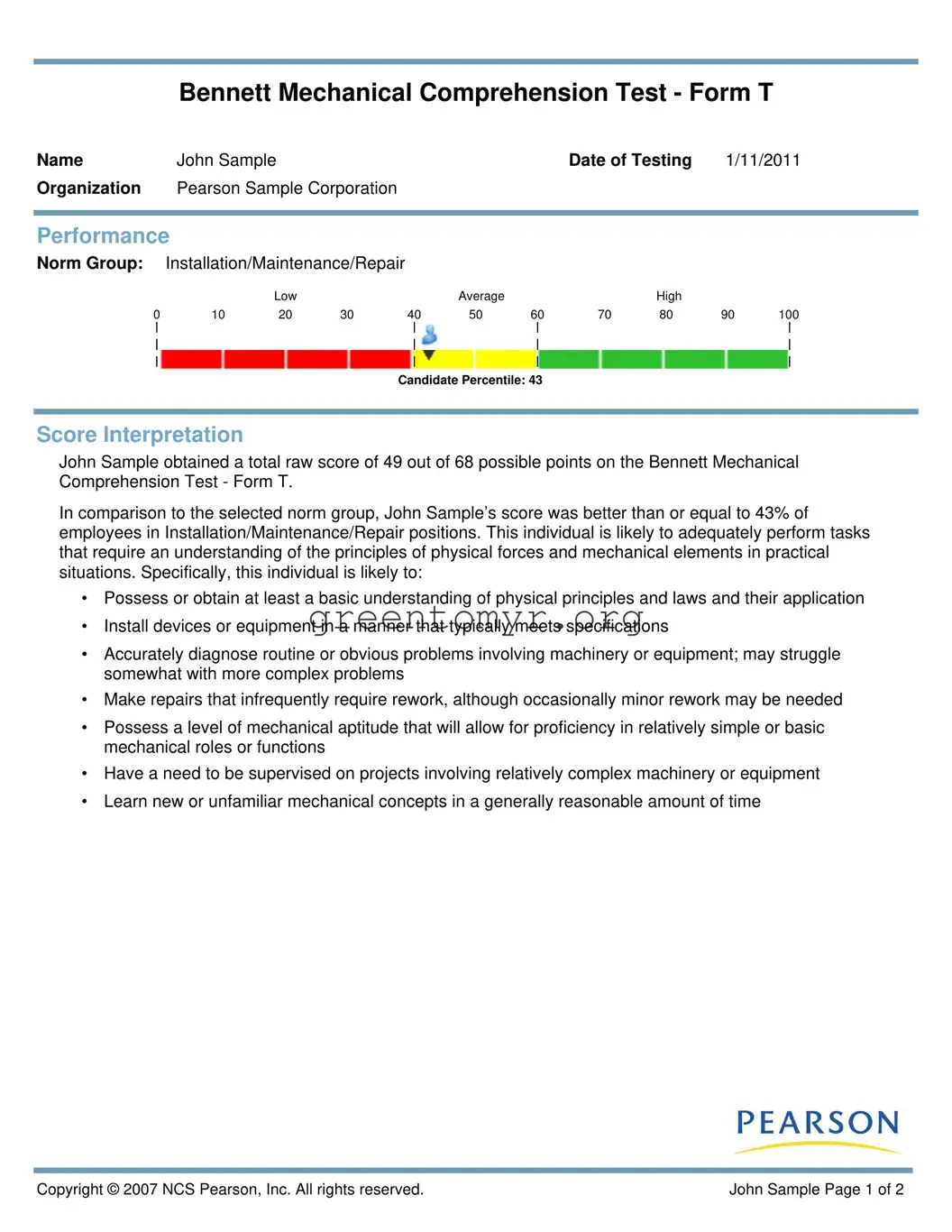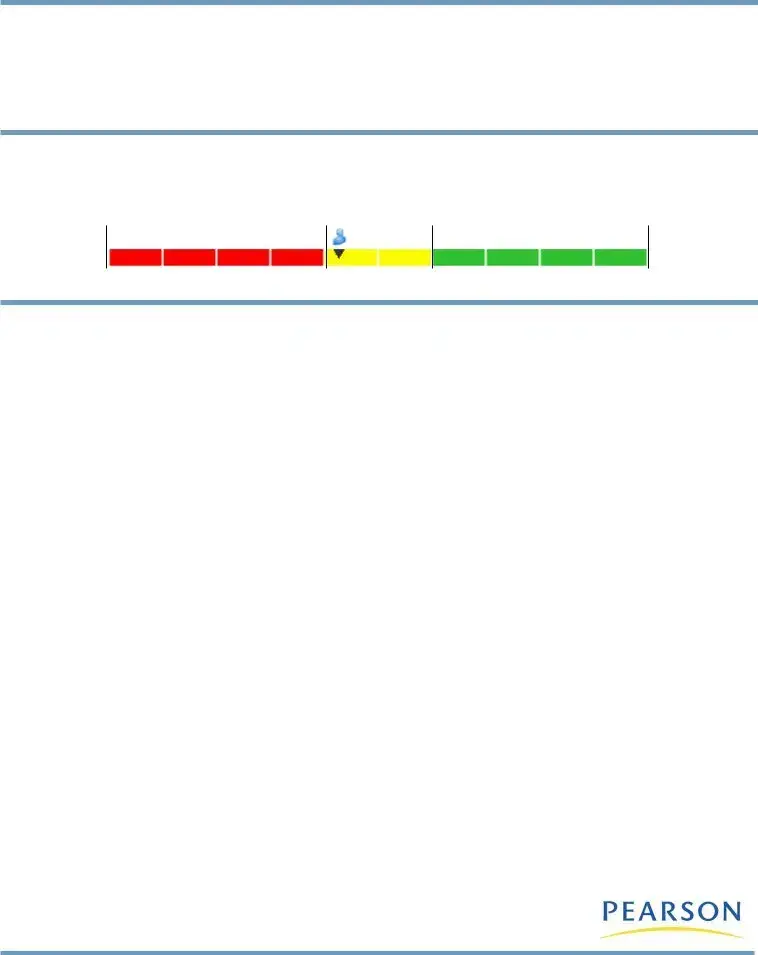Completing the Bennett Mechanical Test form can be straightforward, but there are common mistakes people often make. One frequent error is incomplete personal information. Ensure that all required fields, such as name and date of testing, are filled in completely. Missing information can lead to processing delays or even disqualification.
Another common mistake is misunderstanding the scoring system. The form indicates a total raw score out of possible points. For clarity, it's essential to grasp how your score relates to the percentile rankings within the selected norm group. Confusion about the scoring can lead to incorrect assumptions about one's mechanical abilities.
Some individuals fail to read instructions carefully before taking the test. The test may include specific guidelines on how to approach the questions. Skipping the instructions can result in answering questions incorrectly or misinterpreting what is being asked, impacting overall performance.
Overthinking questions is another trap that candidates fall into. Instead of relying on instinct and initial understanding, some may second-guess themselves. This can lead to wasted time and unnecessary stress, ultimately affecting test results. Trusting one's initial judgment often yields better outcomes.
Another issue is not practicing transferable skills. The test evaluates the ability to understand mechanical concepts. Engaging in hands-on experience or related practice scenarios can enhance performance. Failing to recognize the importance of practical knowledge can result in lower scores.
Additionally, individuals may neglect to manage their time effectively. The test has a time limit, and pacing is crucial. Rushing through or spending too long on a single question can adversely affect overall performance. Practice sessions can help develop a better sense of timing.
Some candidates also submit forms without reviewing them for accuracy. Double-checking for any potential errors or missing information can ensure that the submitted application is correct and complete. A final review can catch simple mistakes that might otherwise go unnoticed.
Lastly, individuals often do not consider the test's implications for employment. It's vital to remember that while the Bennett Mechanical Comprehension Test provides insights into mechanical aptitude, it should not be the sole factor in employment decisions. Making broader evaluations based on various criteria will lead to better hiring practices.


